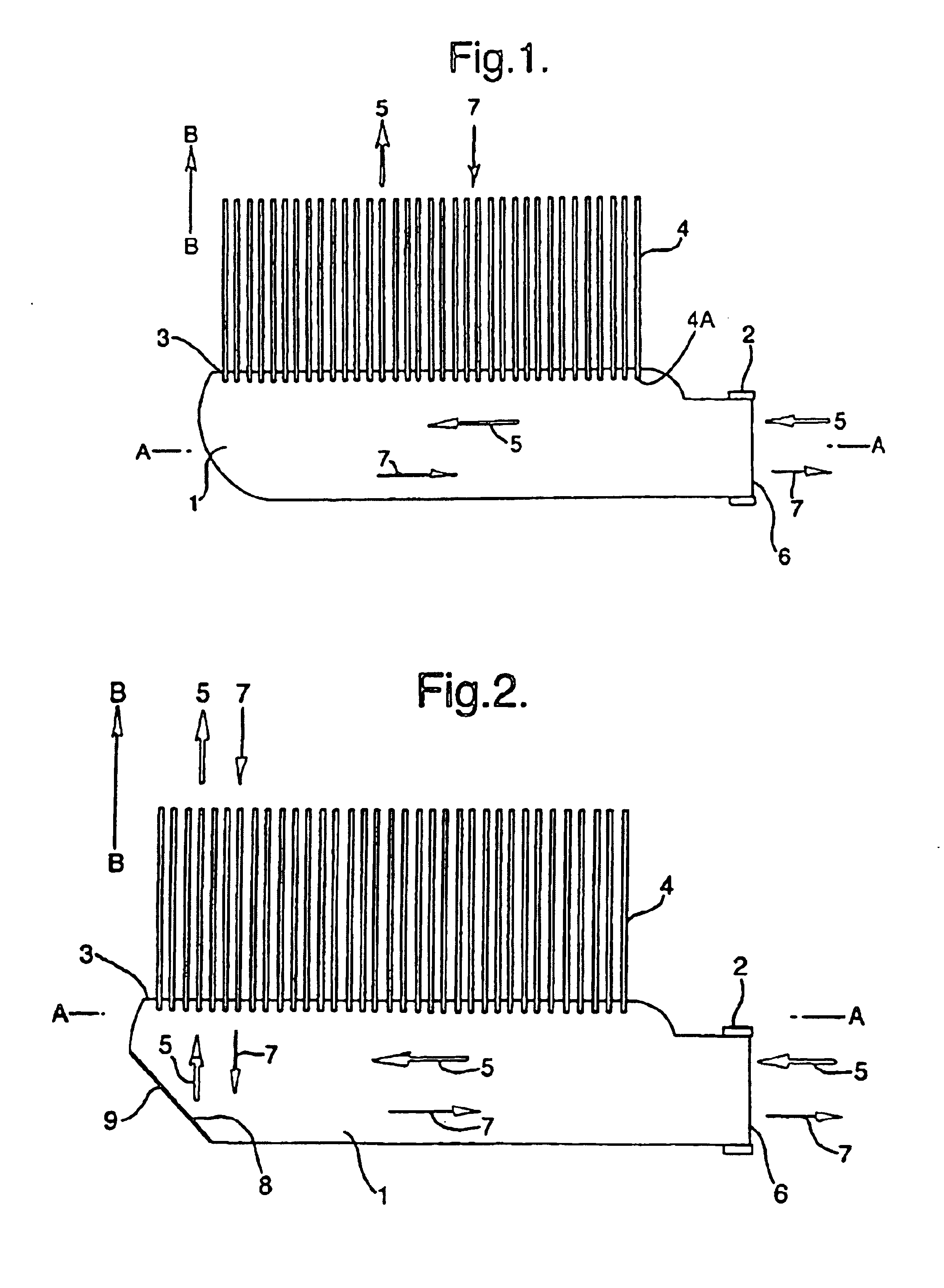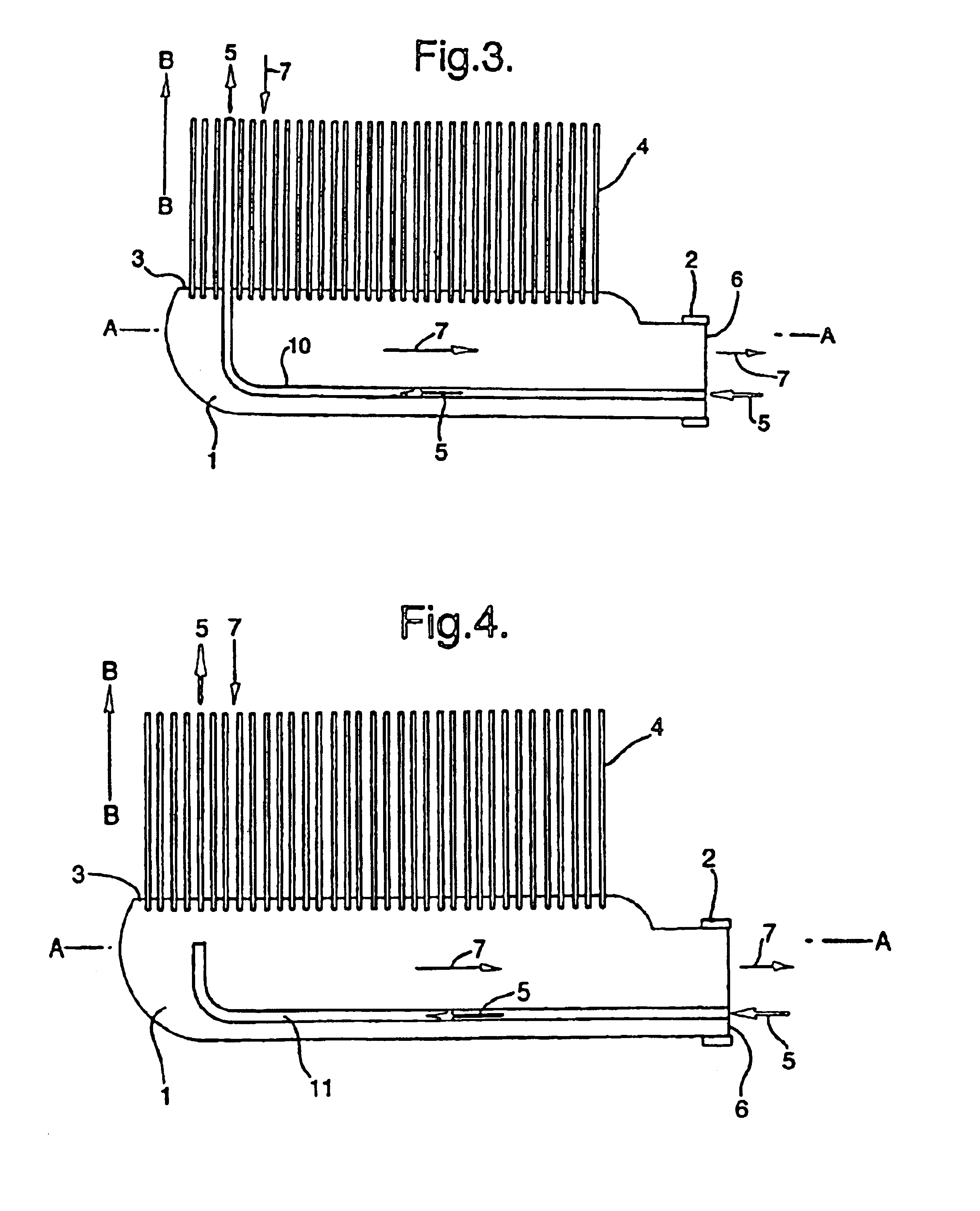Toothbrush head with means to direct and collect radiation
- Summary
- Abstract
- Description
- Claims
- Application Information
AI Technical Summary
Benefits of technology
Problems solved by technology
Method used
Image
Examples
first embodiment
In this invention the head of the toothbrush may be made of a monolithic body of a material which is transparent to the incident and / or emitted radiation and may thus guide radiation transmitted internally within it.
In such a construction incident radiation may be contained within the body of material by total internal reflection caused by the difference in refractive index (“N”) between the high refractive index of the mass and the lower refractive index of the surrounding air of the environment.
Suitable materials from which such a monolithic body may be constructed include the above-mentioned transparent plastics materials.
In this first embodiment the head may be shaped so that its shape diverts incident and emitted radiation in the above-mentioned manner. For example an end surface of the head remote from the handle, or intermediate surfaces located between this end surface and the handle, may be curved or may be angled relative to the longitudinal direction and bristle direction...
second embodiment
In this invention the head of the toothbrush comprises one or more cores of a material which is transparent to the incident and / or emitted radiation, which may guide radiation transmitted internally within it, and having a refractive index N1, the core being surrounded by a sheath which is also of material which is transparent to the incident and / or emitted radiation, the sheath having a refractive index N2, N1 being greater than N2, such that internal reflection occurs as a result of the difference in refractive index between N1 and N2 to direct radiation within the core.
Generally any difference between the refractive index of the core and a surrounding sheath of a transparent material can result in internal reflection within the core and consequently the desired guiding of radiation within the core. Suitable materials from which the core and sheath may be constructed include the above mentioned transparent plastics materials, and these may be selected for the core and sheath on th...
PUM
| Property | Measurement | Unit |
|---|---|---|
| Fraction | aaaaa | aaaaa |
| Angle | aaaaa | aaaaa |
| Wavelength | aaaaa | aaaaa |
Abstract
Description
Claims
Application Information
 Login to View More
Login to View More - R&D
- Intellectual Property
- Life Sciences
- Materials
- Tech Scout
- Unparalleled Data Quality
- Higher Quality Content
- 60% Fewer Hallucinations
Browse by: Latest US Patents, China's latest patents, Technical Efficacy Thesaurus, Application Domain, Technology Topic, Popular Technical Reports.
© 2025 PatSnap. All rights reserved.Legal|Privacy policy|Modern Slavery Act Transparency Statement|Sitemap|About US| Contact US: help@patsnap.com



